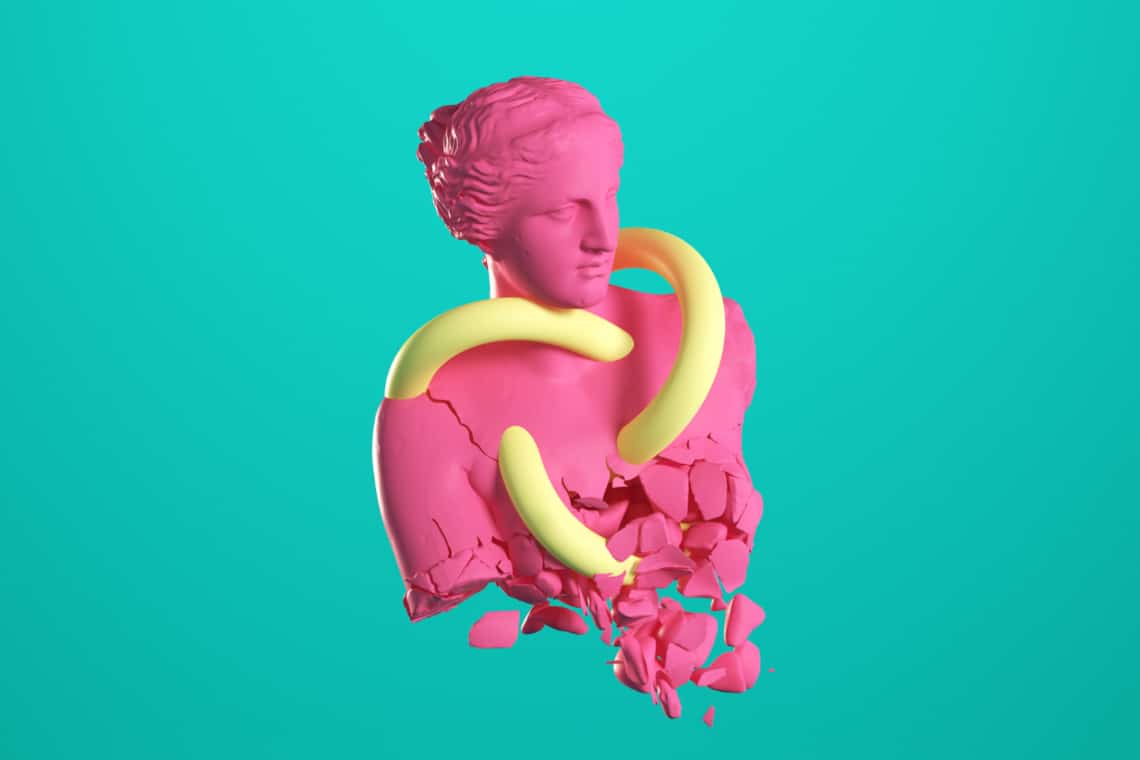Mike Winkelmann, better known as Beeple, is building his own museum to exhibit digital art, which is art involving NFTs, non-fungible tokens.
The Winkelmann-designed museum will be part studio and part exhibition space for temporary exhibitions of digital art, with no set time frame.
The announcement was made by Winkelmann at the Wall Street Journal’s Tech Live conference.
Indeed, Beeple said that thanks in part to the now landmark sale at Christie’s for nearly $70 million last year, he is planning a 50,000-square-foot exhibition space in Charleston, South Carolina, to showcase digital art, including his own.
Summary
How Mike Winkelmann’s museum will be structured
As previously anticipated, Beeple said that although part of the space will be used as a studio, the property will be used primarily as a public museum.
The artist confessed his concern that NFT digital art is not getting the visibility it deserves in the mainstream art market. So, Winkelmann’s decision is to exhibit the works of digital artists he most admires and finds interesting, in addition to his own.
Moreover, Beeple added that he has no plans to sell the works of these artists, as he wants the museum to remain a noncommercial space. Among the changes from a traditional museum, he told the conference, the intention is to shorten the time of exhibitions compared to most art galleries or traditional museums.
So, instead of taking months to set up a show and leaving it identical for a varied amount of time, Winkelmann will try to change the digital art on display without the immobility typical of the exhibitions we are used to.
Why Beeple wants to create a digital art museum
Winkelmann’s initiative does not start at random. In fact, as he states, the idea also comes on the wave of difficulties digital artists are facing in recent times, due to low demand for their NFT works.
In fact, there’s not a lot of hype for NFT works now, compared to the initial excitement that had pervaded everyone at the height of the Covid-19 pandemic.
In this regard, Beeple confesses:
“When the cryptocurrency market nearly collapsed this spring, it brought the NFT-based art market with it – auction house Christie’s only sold $ 4.6 million worth of NFTs during the first half of this year, compared to $ 150 million last year.”
Apparently, Winkelmann has visited museums around the world in recent years to get a better idea of how curators and visitors present and interact with digital art.
“My exhibition space in South Carolina will focus on the real experience of digital art, rather than on the speculation that surrounds it.”
Mike Winkelmann’s concerns about NFT art
Mr. Winkelmann said he intends to take advantage of lessons he learned, such as the NFT digital art phenomenon, to help other emerging artists during the recession.
Mr. Beeple is hopeful and expects that digital art will survive the current market climate, although he put the likelihood of a sifting through of lesser artworks into account. Similarly, NFTs, which have no entertainment value or broad utility, will likely lose value and disappear.
Furthermore, Winkelmann added:
“We are definitely in a crypto winter. People are hyper-focused on prices and things like that, and I think the correct goal would be to build things that will have long-term value in the space. Fundamental technology hasn’t changed in the past six months. If you focus on providing products that people find fun or useful, everything will be fine.”
Mr. Winkelmann said he pulled some of his fortune out of cryptocurrencies before the market crashed, but has since reinvested it.
Beeple definitely joins the big artists opening their own museums and prospects that his will show digital art in a different way than the proliferation of immersive art productions that have been popping up lately, centered on artists like Vincent Van Gogh.
Winkelmann is also aware that he can do much better than the few blue-chip galleries that are showing digital art that engulfs rooms. This is because blockchain technologies represent a much more meaningful way to collect work, according to Beeple.
Internet Festival: art in the time of NFTs
During the last Internet Festival, “Art in the Time of NFTs and Blockchain” was discussed in an afternoon of insights, curated by Lorenzo Guasti and Serena Tabacchi.
In particular, they discussed the sale on 11 March 2021 of the NFT artwork “The first 5000 days” by artist Beeple. The collage containing his first five thousand daily works, was auctioned at Christie’s for $70 million.
After this sale, the world of art and collecting changed forever and will never be the same again.
Insofar as, before NFTs, it was always difficult for even the most famous digital artist to claim his place in the art market because of the impossibility of making his work unique and non-reproducible.
Lorenzo Guasti, curator of the Internet Festival, states:
“NFTs make all digital art products unique and original. Before the tokens, there was the risk of duplication or counterfeiting. With NFTs it becomes impossible, because NFT is a smart contract, that is, a contract written on a blockchain. And, once it is written in the blockchain, it becomes indelible and non-falsifiable. Thus, it becomes an exchange that can be sold or bought.”
Indeed, NFTs have allowed artists to experiment with a technology that was previously accessible only to those with more technical knowledge. They also allowed artists to connect with each other through platforms, marketplaces, or social media.




